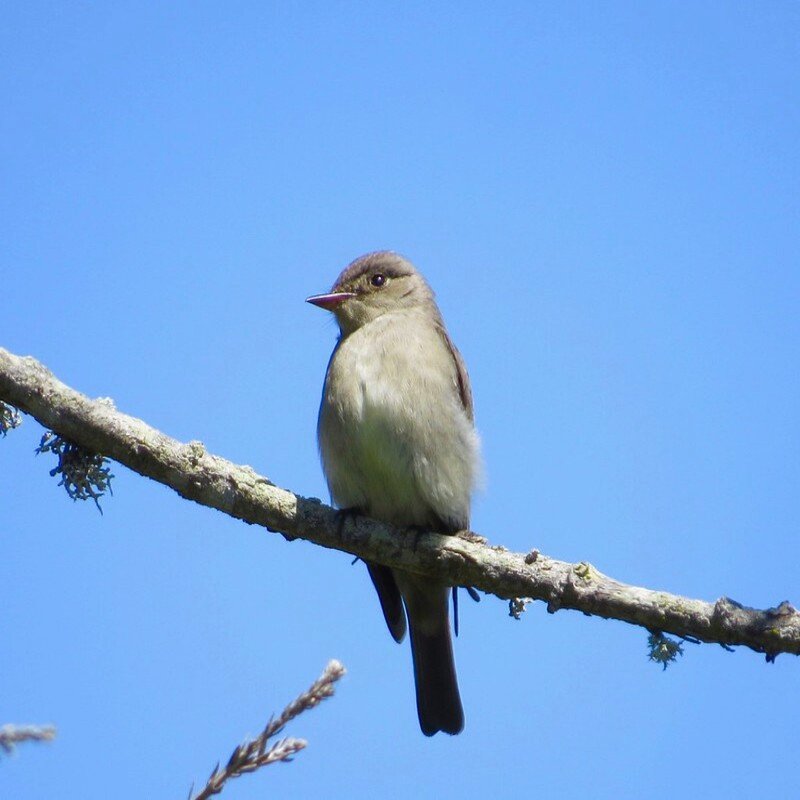A little tyrant flycatcher is the western wood pewee (Contopus sordidulus). Adults have gray-olive upper parts with light underparts that are washed with olive on the breast. They have two wing bars as well as a dark bill with yellow at the base of the lower jaw. This bird resembles the eastern wood pewee in appearance; the two birds were once regarded to be the same species. They cry is a loud buzzy peer, and the song consists of three quick descending trees followed by a descending peer.
Quick Overview: Contopus Cooperi – Olive-Sided Flycatcher
Body size: Around 6.25 in (16 cm) and a weight of 14 g (0.5 oz)
Main colors: Dull Olive-Gray, Mild Olive-Gray
Range: Western United States
Migratory Bird: Yes
Best time of the year to see in the U.S.: June, July, August, September
Conservation Status: Least Concern
Western wood-Pewee Description
Flycatcher of medium size with dull olive-gray upperparts and mild olive-gray underparts. The cap of the head is darker, and there is a tiny crest.

Size
These birds have a length of 6.25 in (16 cm) and a weight of 14 g (0.5 oz). Their wings could range from 10.5 in (27 cm).
Feeding
Olive-sided Flycatcher mostly feeds on insects such as flies, wasps, bees, ants, beetles, moths, and butterflies. They also eat dragonflies, termites, and spiders on occasion. All of the insects are engulfed in the air. Contopus sordidulus hunts from a perch and catches prey by twisting in the air very swiftly. They return to the perch immediately after collecting a prey item.
Habitat
They can be found in evergreen forests, woods, coniferous forests, and open and closed-canopy forests in the summer. They can also be found in agricultural areas, meadows, grasslands, and thickets in the winter. Western wood-pewees enjoy drier surroundings in general.
Behavior
Sordidulus is Latin for unclean or untidy and refers to the dusky brown wash across the breast and sides. While chasing and attacking intruders in nest defense, the Western Wood-Pewee produces a clapping noise with its bill.
Contopus Sordidulus Scientific Classification
- Kingdom: Animalia
- Phylum: Chordata
- Subphylum: Chelicerata
- Class: Aves
- Order: Passeriformes
- Family: Tyrannidae
- Genus: Contopus
- Species: Contopus sordidulus
Best time of the year to see
The best time to see these birds in United States is during summer season (June – September).
Distribution of the Western wood-Pewee in the USA
Occurs from southern Mexico to Argentina, but strays to the east coast of the United States and occurs inadvertently elsewhere. It has been observed in California, Idaho, Alberta, Texas, Kansas, Louisiana, and in the vicinity of the Great Lakes.
The Western wood-Pewee can be found in the following states in the United States – Alaska, Arizona, Colorado, Delaware, Hawaii, Illinois, Maine, Maryland, Massachusetts, Michigan, Montana, Nebraska, Nevada, New Hampshire, New Mexico, North Dakota, Ohio, Oklahoma, Oregon, South Dakota, Utah, Washington, Wisconsin, and Wyoming.

